Rising dawn: Rolls-Royce debut handsome new soft-top
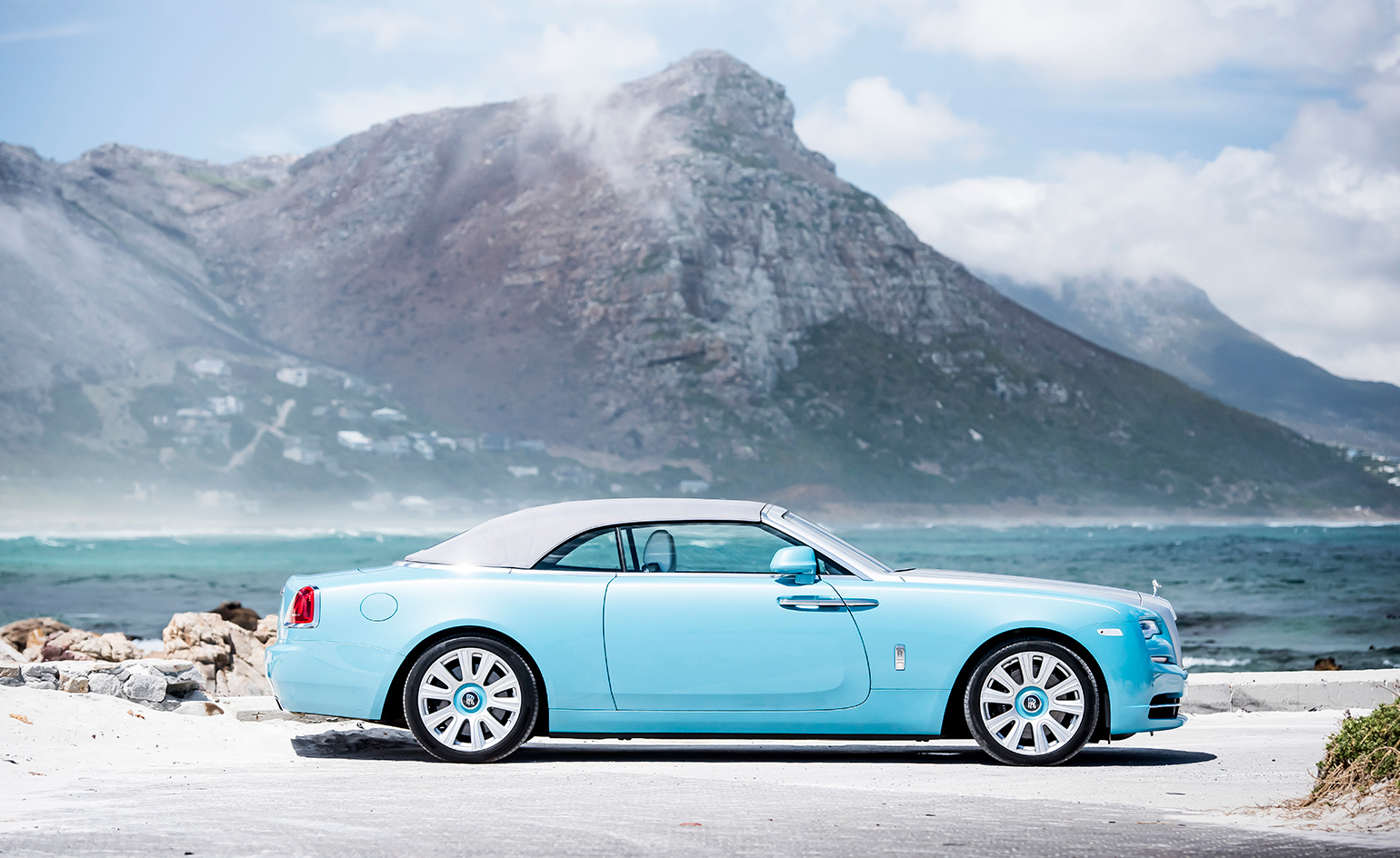
The Rolls-Royce Dawn made its debut in an underground car park, just a stone's throw from Wallpaper's HQ. Granted, it was the car park beneath Rogers Stirk Harbour + Partners' award-winning Neo Bankside development, and the other bays were full of Ferraris, Maseratis and other exotic metal. But still, it was a rather inauspicious unveiling for a grand convertible costing some quarter of a million pounds. For a start, there wasn't the lighting or the distance to do anything but admire the craft, appreciate the details and count down the days until we actually got to drive it.
Under the sub-equatorial sunshine of Cape Town, the Dawn is a very different proposition. Car designers talk animatedly about the importance of the play of light on their complex, sculpted surfaces, and this was a stark demonstration of how right they are to be concerned. The Dawn is a big car – nearly 5.3m long – and with that near vertical ‘pantheon’ grill it is nothing if not imposing. But it’s also incredibly handsome, parlaying its bulk into something that’s grand and majestic on the open road. That’s due in part to the way light bounces off its substantial flanks, creating a flowing, elegant line that’s accentuated by the thin highlight colour that runs from nose to tail.
Like every Rolls-Royce – and almost every other luxury car – the Dawn isn’t intended as a car to use every day. The Goodwood-based company makes just a few thousand cars each year and it knows every customer very well. Some 97.5 per cent of all Rolls-Royces receive additional customisation, and the long-drawn out process of commissioning a car can run to many years, with every option painstakingly explored in detail. It’s more akin to buying a yacht or building a house than simply ticking the boxes on an online configurator.
Owning such a car therefore becomes about much more than simply using it for transport. Rolls-Royce is bullish about its role as probably the best-known of all luxury brands, but it knows full well it has to co-exist with its ‘competitors’. Rolls owners typically have a small and varied fleet of vehicles, often spread across a couple of continents, so it’s imperative that each individual car delivers what it promises. In the case of the Dawn, the promise is one of pleasure. Open-top motoring used to be the norm, of course, but once mass production methods started churning out millions of cars, the grand convertible evolved into a statement piece, akin to the country estate, sleek motor boat or even a late-period Monet – something that can be admired from afar, representing embedded potential and the dreams of escape.
The Dawn’s classical associations begin with its name, which nods to the original post-war Silver Dawn. A 1952 example was even shipped out to South Africa to stand alongside its modern siblings, and you can see where the Rolls-Royce design team has drawn on its sense of sybaritic grandeur. Giles Taylor, the company’s director of design, describes how the Dawn’s forward-looking stance was achieved by the careful distribution of visual weight around the car, even adding a few inches to the height of the stowed hood (despite the engineering team’s insistence that it could be thinner). These instincts have paid off handsomely. The Dawn sits on the same chassis as the sleek Wraith, itself closely related to the Ghost, the ‘smaller’ of Rolls-Royce’s product line. In effect, it replaces the Phantom Drophead Coupé, an even more ostentatious open-topped car that’s derived from the flagship Phantom Saloon.
On the road, with the multi-layered, ultra-insulated roof folded down beneath the richly grained wood of the rear deck, the Dawn drives like a metaphorical dream. Rolls has always underplayed the role of raw power in its automobiles, preferring to let the creamy, effortless delivery do all the talking. There’s nothing as déclassé as a raucous engine note, either, just instant acceleration should you need it and well-sprung, near-silent progress when you don’t. The thin-rimmed steering wheel is a throwback to an earlier era and the in-car tech – all derived from parent company BMW’s vast warehouse of cutting edge gadgetry – is discrete and downplayed. The navigation screen can even be concealed by a swivelling dash panel should you wish to blot out the 21st century for good (you’ll have to turn off the head-up display as well).
On the roads east of Cape Town, driving the Dawn was akin to sitting in an IMAX on an Eames Lounge chair. The views were so sweeping and cinematic they looked like matte paintings, and the comfort levels exceeded all expectations. The media’s luxurious sojourn on the Cape wasn’t necessarily designed to help the company sell more cars (order books are full until 2018 in any case). Instead, the backdrop and the ambience are designed to remind Rolls-Royce owners of what their cars can do. To own a Dawn is to have the potential for ambience, elegance and the perpetual anticipation of something special, forever lurking just a wheel-turn away.
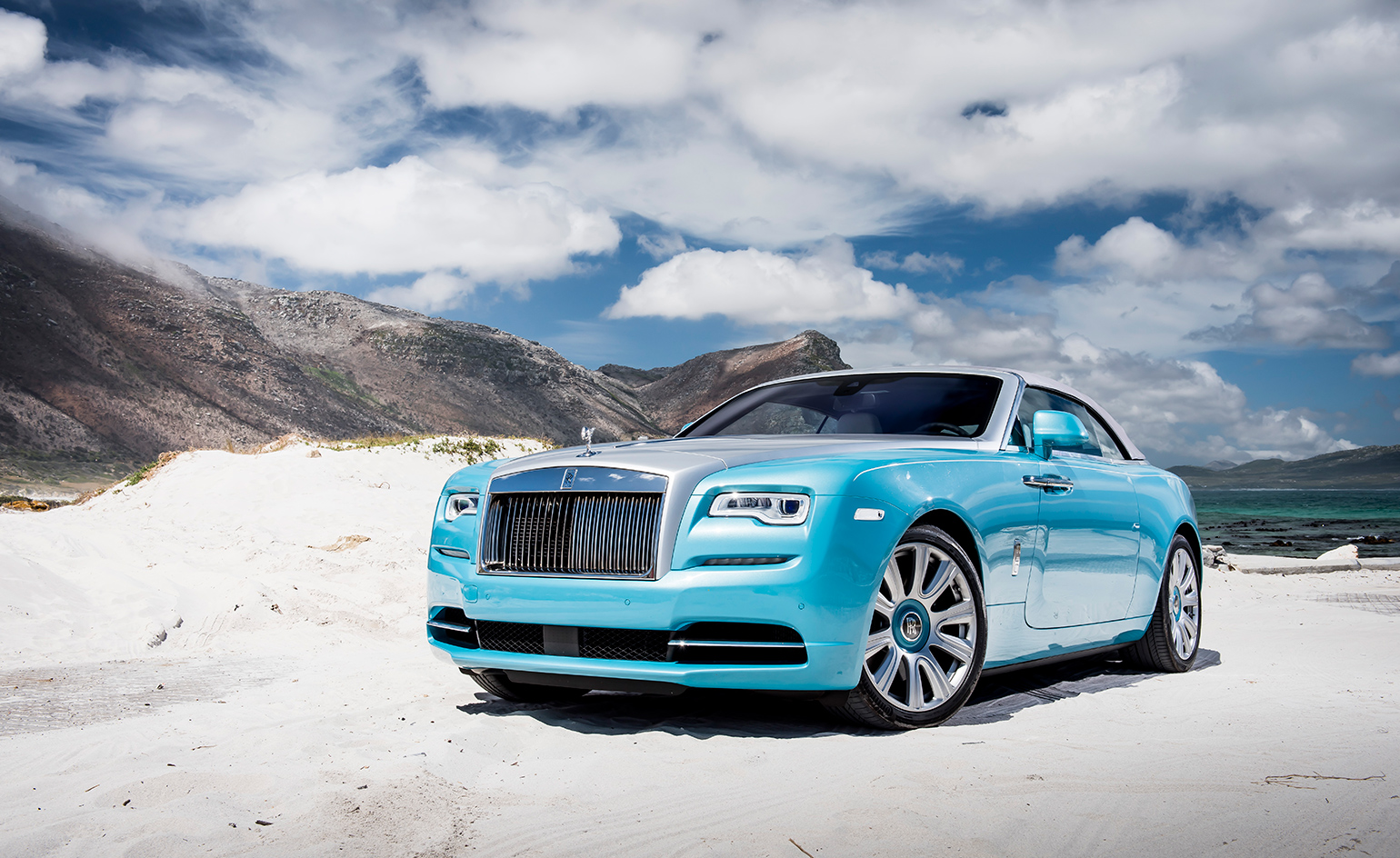
The Dawn is a big car – nearly 5.3m long – and with that near vertical ‘pantheon’ grill, it's nothing if not imposing
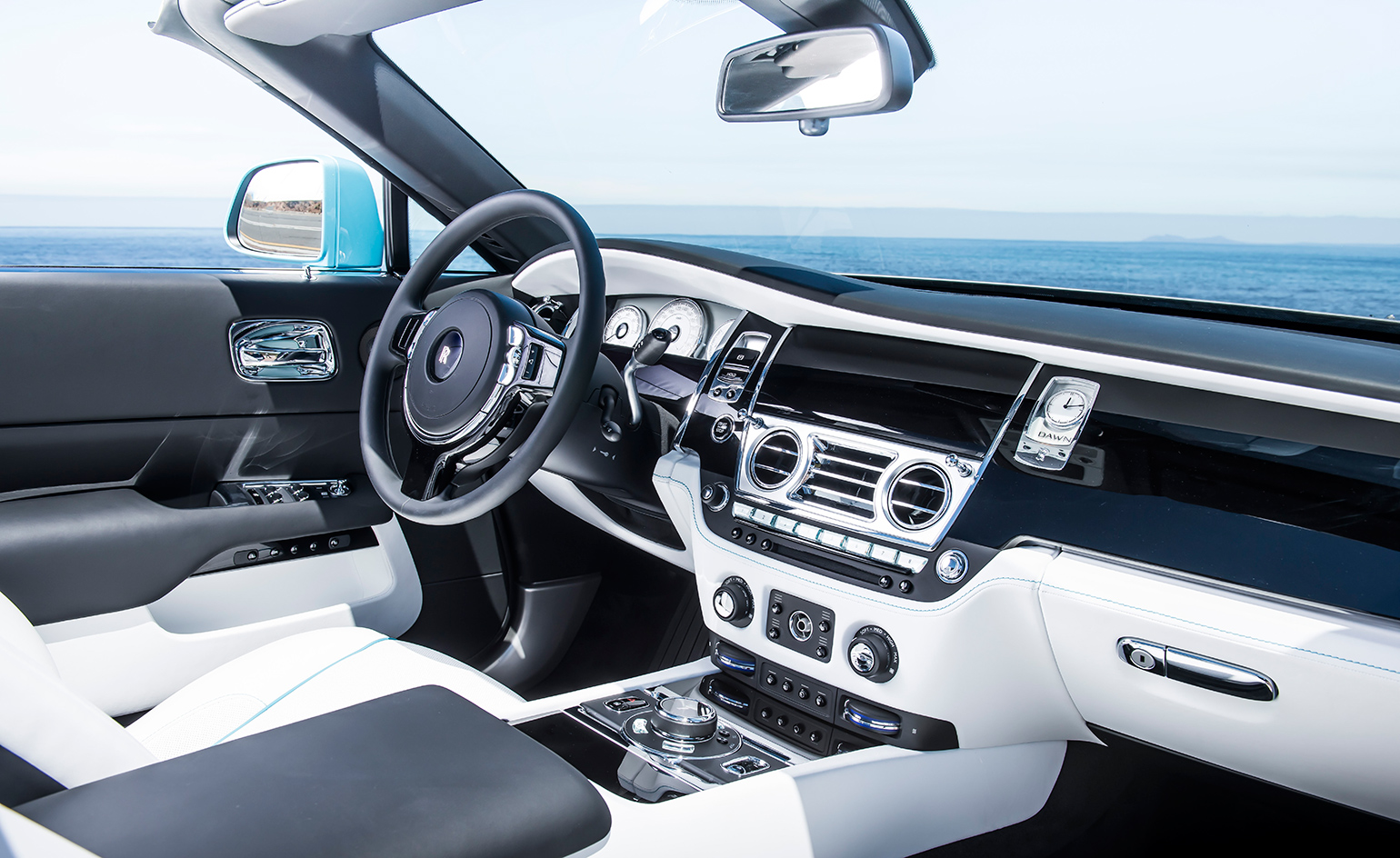
The Dawn’s classical associations begin with its name, which nods to the original post-war Silver Dawn; the navigation screen can even be concealed by a swivelling dash panel should you wish to blot out the 21st century for good
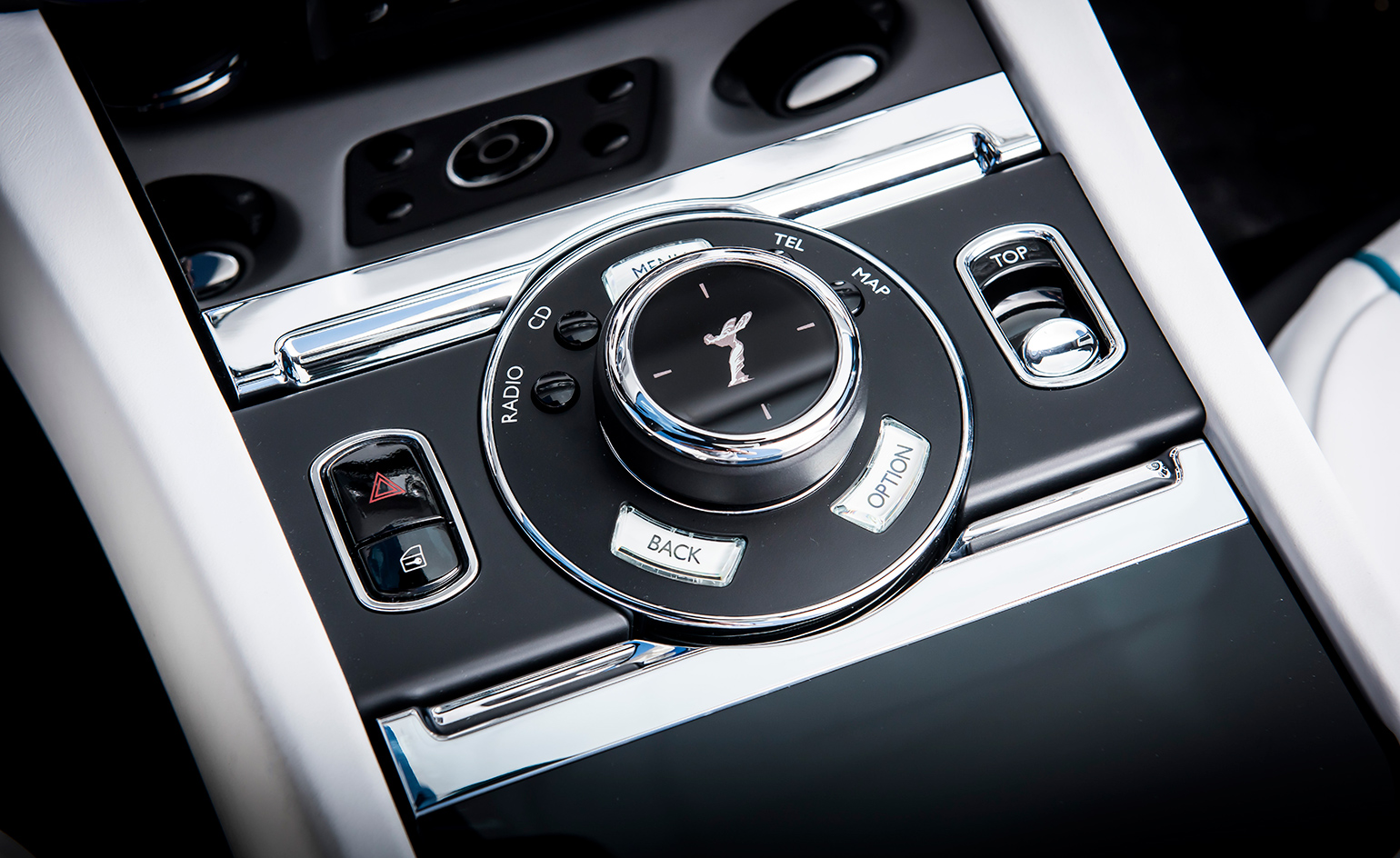
Some 97.5 per cent of all Rolls-Royces receive additional customisation, and the long-drawn out process of commissioning a car can run to many years, with every option painstakingly explored in detail
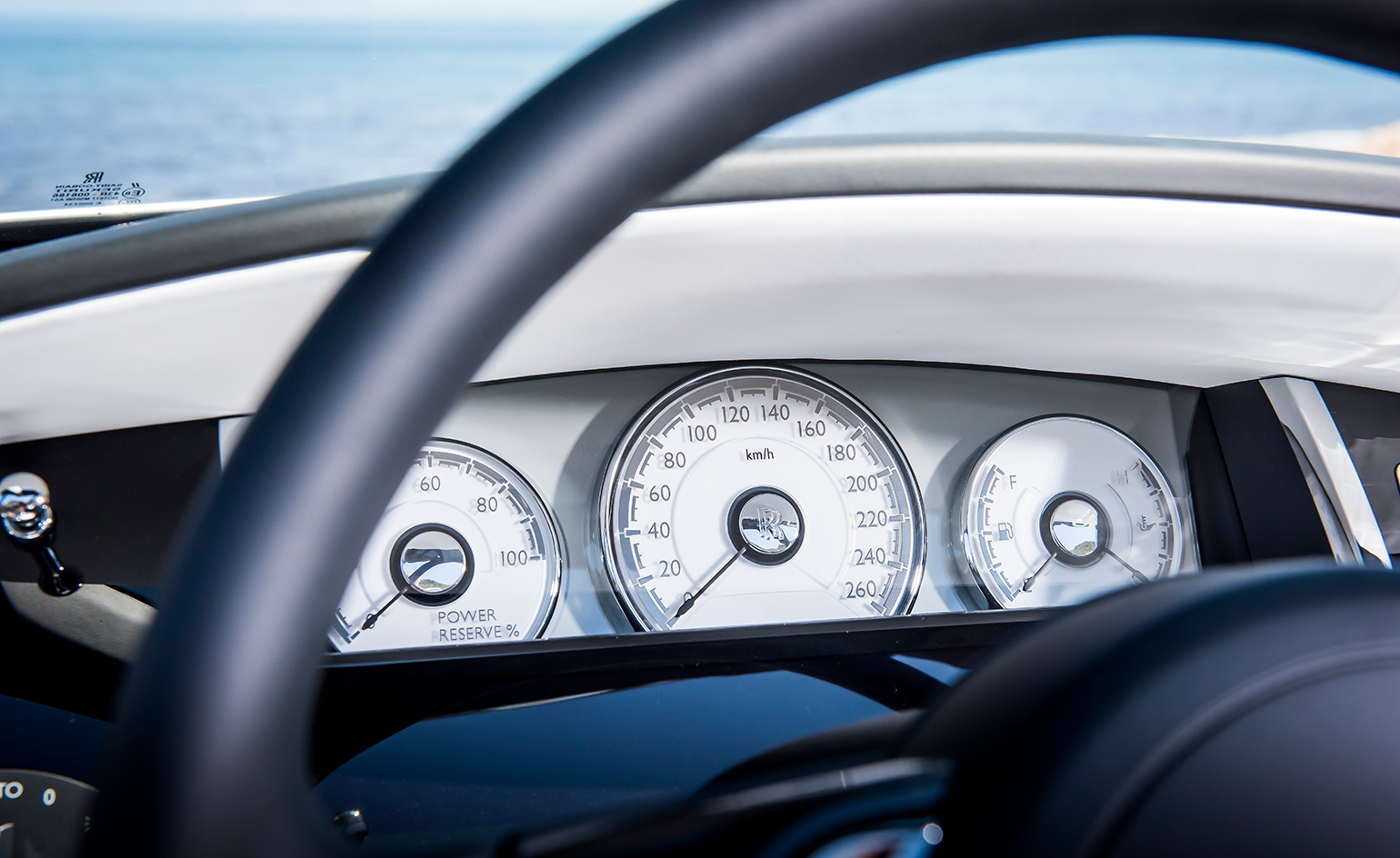
The thin-rimmed steering wheel is a throwback to an earlier era and the in-car tech – all derived from parent company BMW’s vast warehouse of cutting edge gadgetry – is discrete and downplayed
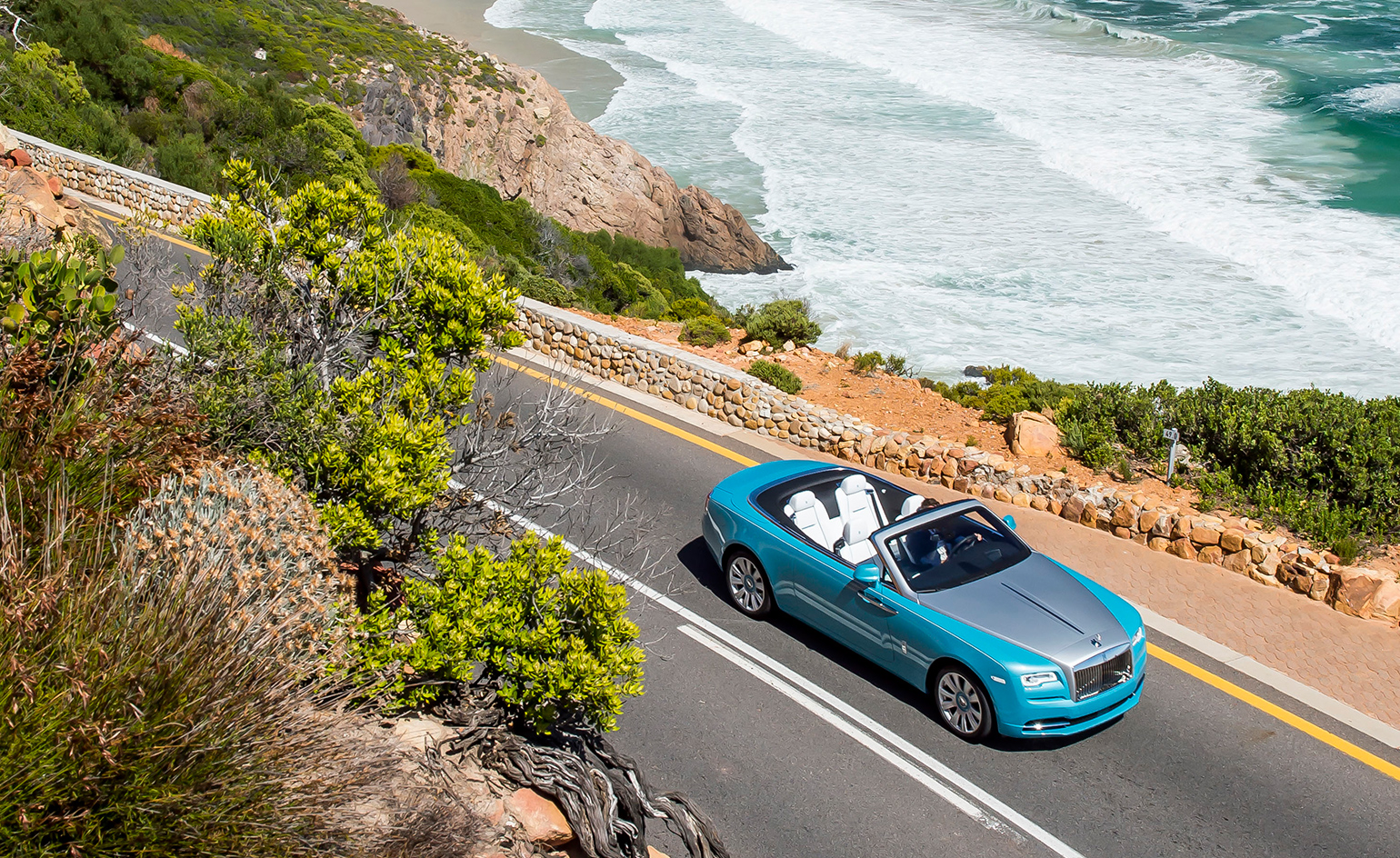
On the road, with the multi-layered, ultra-insulated roof folded down beneath the richly grained wood of the rear deck, the Dawn drives like a metaphorical dream
INFORMATION
Rolls-Royce Dawn, from £245,000. For more information, visit the Rolls-Royce website
Wallpaper* Newsletter
Receive our daily digest of inspiration, escapism and design stories from around the world direct to your inbox.
Jonathan Bell has written for Wallpaper* magazine since 1999, covering everything from architecture and transport design to books, tech and graphic design. He is now the magazine’s Transport and Technology Editor. Jonathan has written and edited 15 books, including Concept Car Design, 21st Century House, and The New Modern House. He is also the host of Wallpaper’s first podcast.
-
 A Xingfa cement factory’s reimagining breathes new life into an abandoned industrial site
A Xingfa cement factory’s reimagining breathes new life into an abandoned industrial siteWe tour the Xingfa cement factory in China, where a redesign by landscape specialist SWA Group completely transforms an old industrial site into a lush park
By Daven Wu
-
 Put these emerging artists on your radar
Put these emerging artists on your radarThis crop of six new talents is poised to shake up the art world. Get to know them now
By Tianna Williams
-
 Dining at Pyrá feels like a Mediterranean kiss on both cheeks
Dining at Pyrá feels like a Mediterranean kiss on both cheeksDesigned by House of Dré, this Lonsdale Road addition dishes up an enticing fusion of Greek and Spanish cooking
By Sofia de la Cruz
-
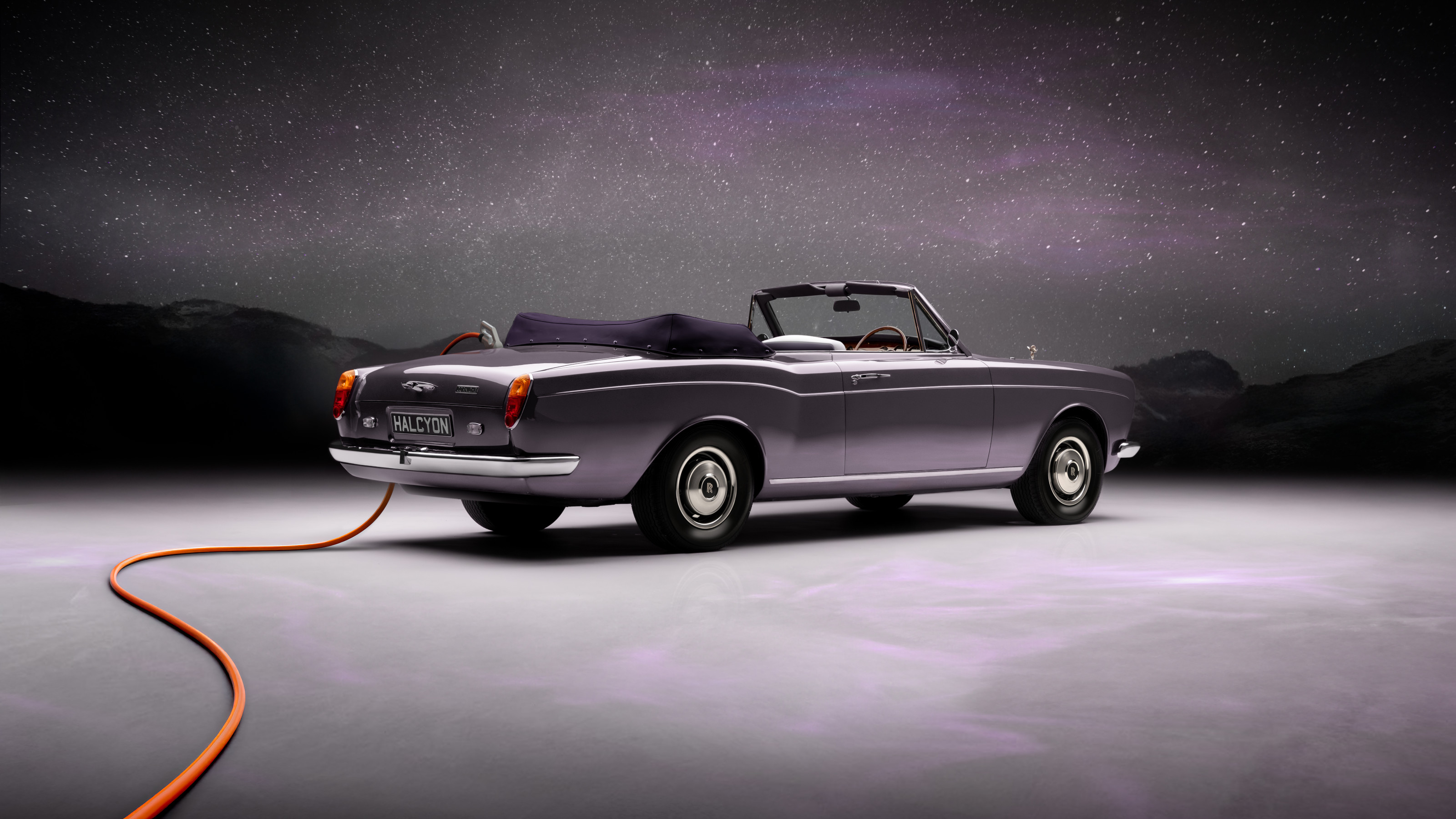 EV start-up Halcyon transforms a classic 1970s Rolls-Royce into a smooth electric operator
EV start-up Halcyon transforms a classic 1970s Rolls-Royce into a smooth electric operatorThis 1978 Rolls-Royce Corniche is the first fruit of a new electric restomod company, the Surrey-based Halcyon
By Jonathan Bell
-
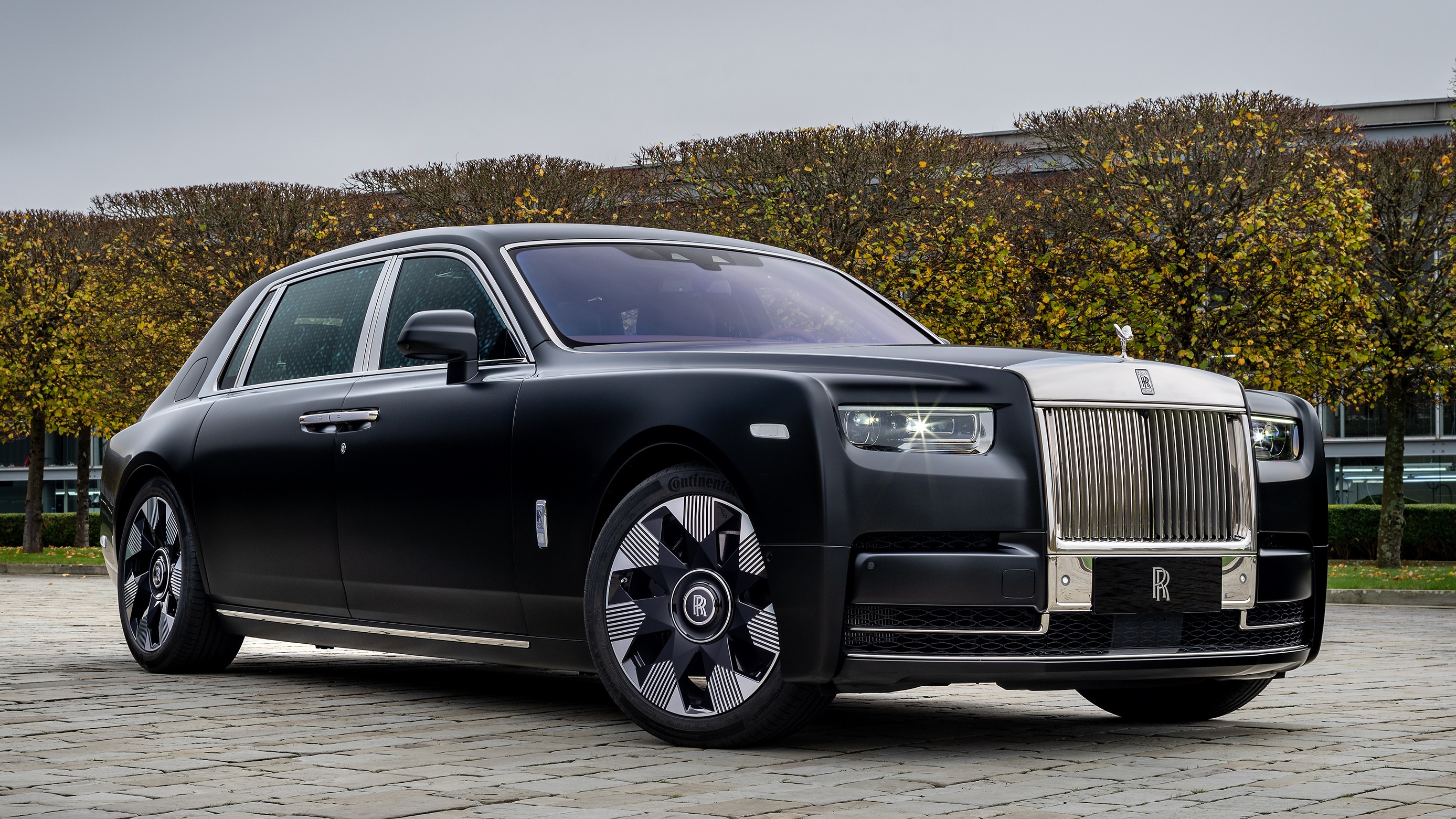 Rolls-Royce Phantom Dragon crosses cultures with a highly crafted approach
Rolls-Royce Phantom Dragon crosses cultures with a highly crafted approachThis one-of-one Phantom Extended has been built as a celebration of the outgoing Year of the Dragon, overseen by Rolls-Royce’s Shanghai Private Office
By Jonathan Bell
-
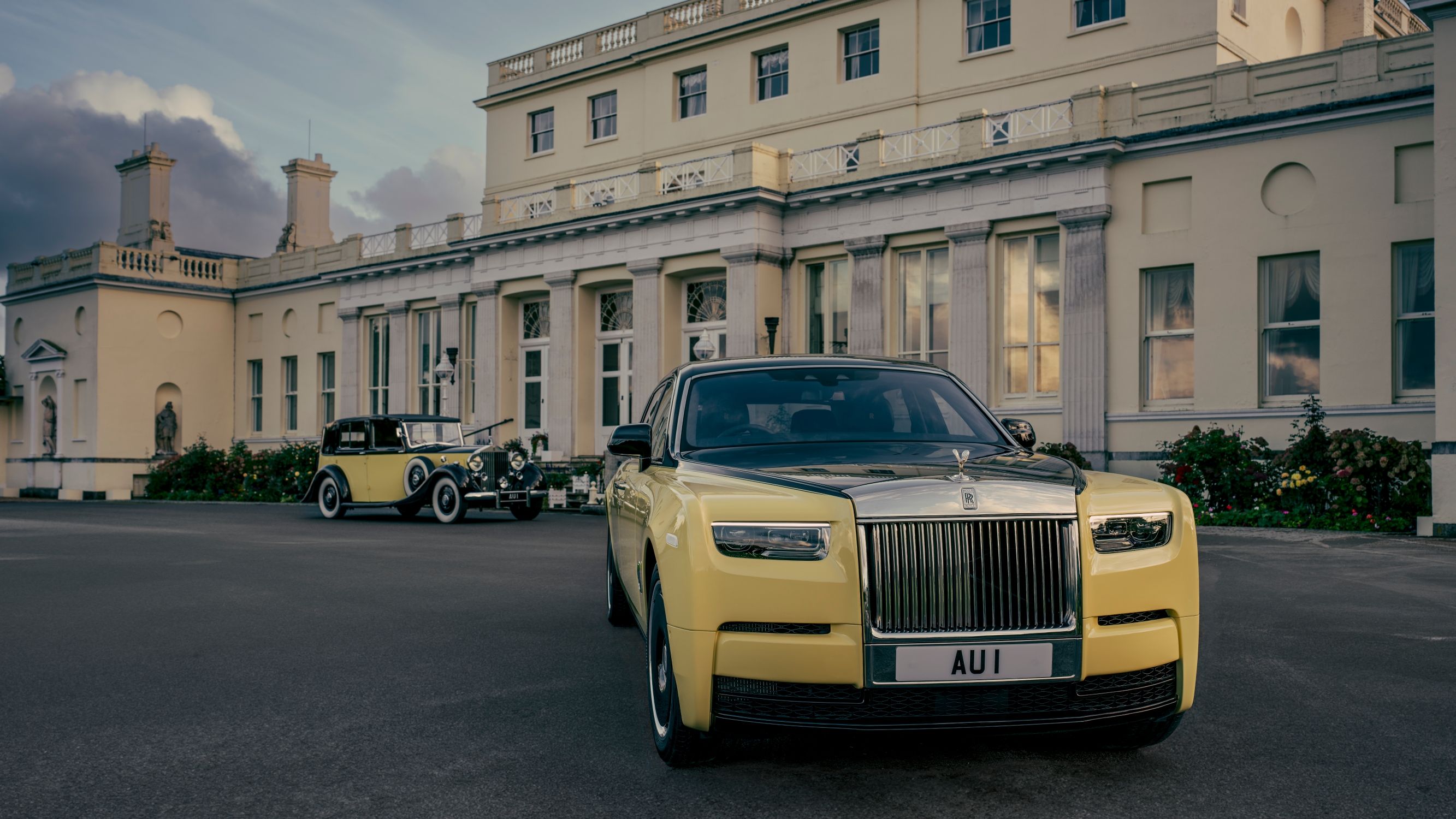 Rolls-Royce re-imagines the classic wheels of one of James Bond’s greatest antagonists
Rolls-Royce re-imagines the classic wheels of one of James Bond’s greatest antagonistsFor one lucky Rolls-Royce owner and Fleming obsessive, this one-off Phantom Goldfinger will blur the lines between cinematic fantasy and real life
By Adam Hay-Nicholls
-
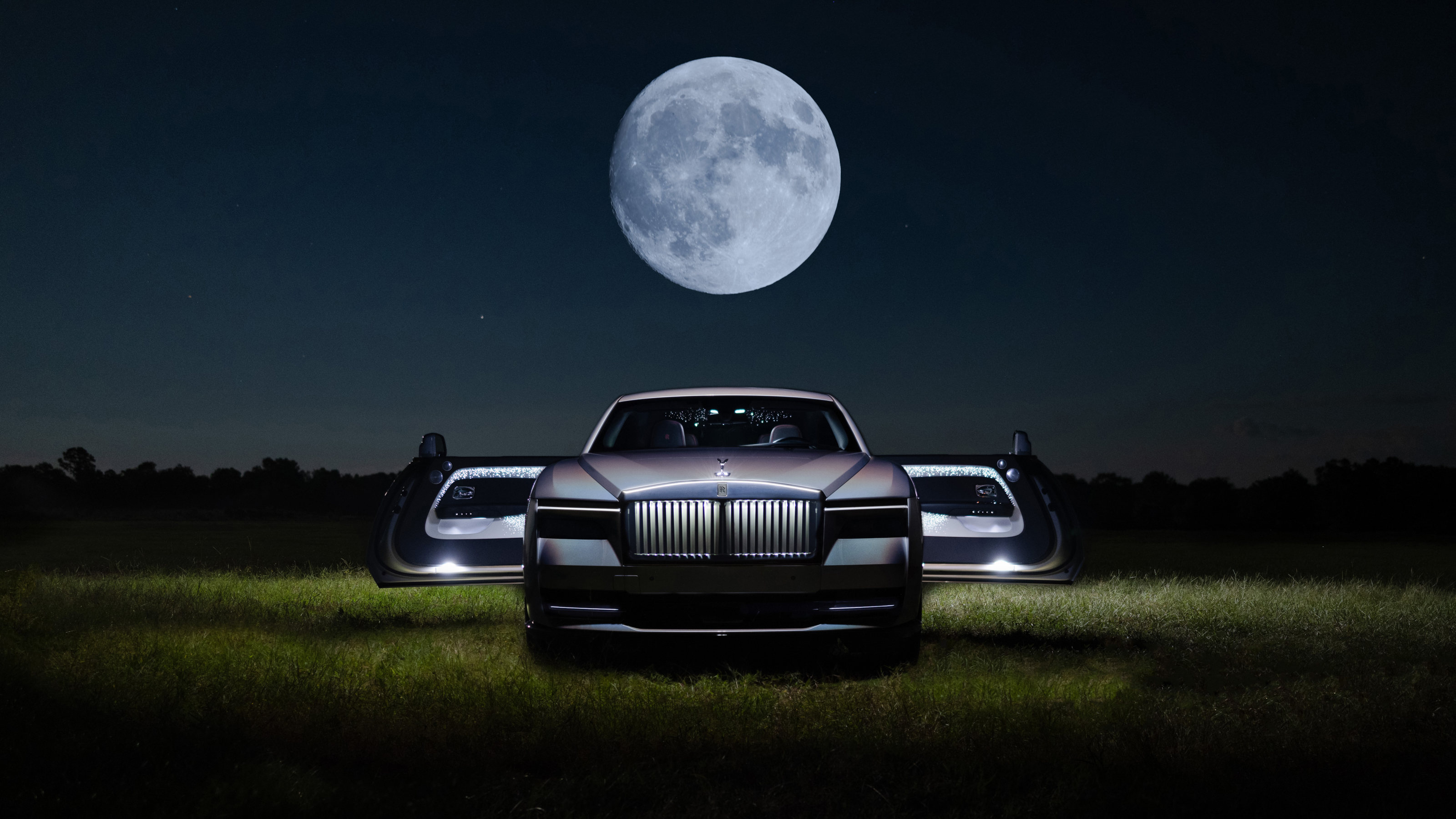 Rolls-Royce’s Bespoke division pushes paint technology to the limits in the Spectre Lunaflair
Rolls-Royce’s Bespoke division pushes paint technology to the limits in the Spectre LunaflairThis one-off commission transforms Rolls-Royce’s all-electric Spectre into a shimmering spectacle inspired by atmospherical effects
By Jonathan Bell
-
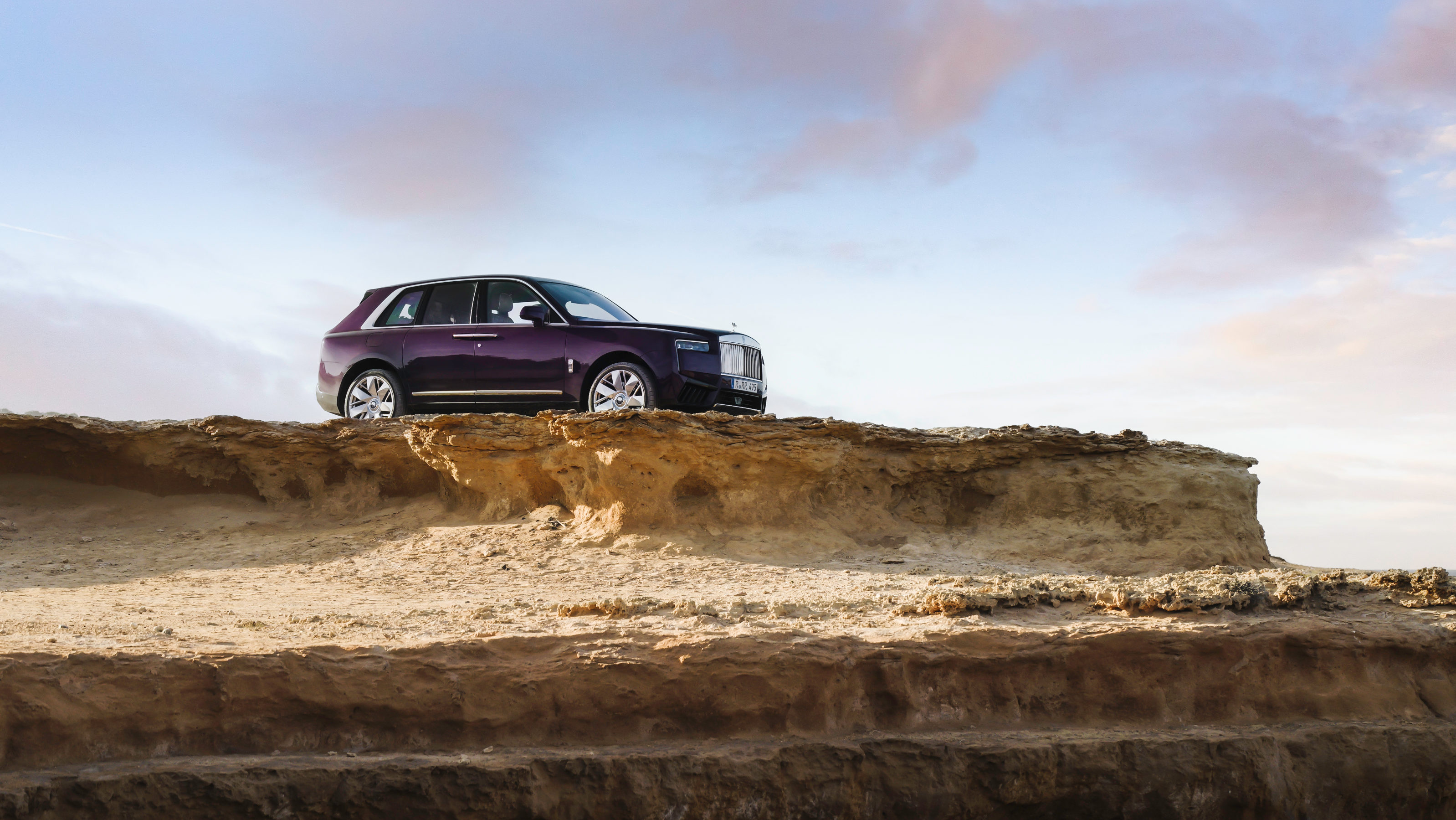 The subtly revised Rolls-Royce Cullinan offers clients an instantly commanding presence
The subtly revised Rolls-Royce Cullinan offers clients an instantly commanding presenceA Rolls-Royce is no longer the ‘best car in the world,’ but the best way to make your mark on automotive culture. Cullinan Series II goes even further into the world of branded storytelling and subtle oneupmanship
By Jonathan Bell
-
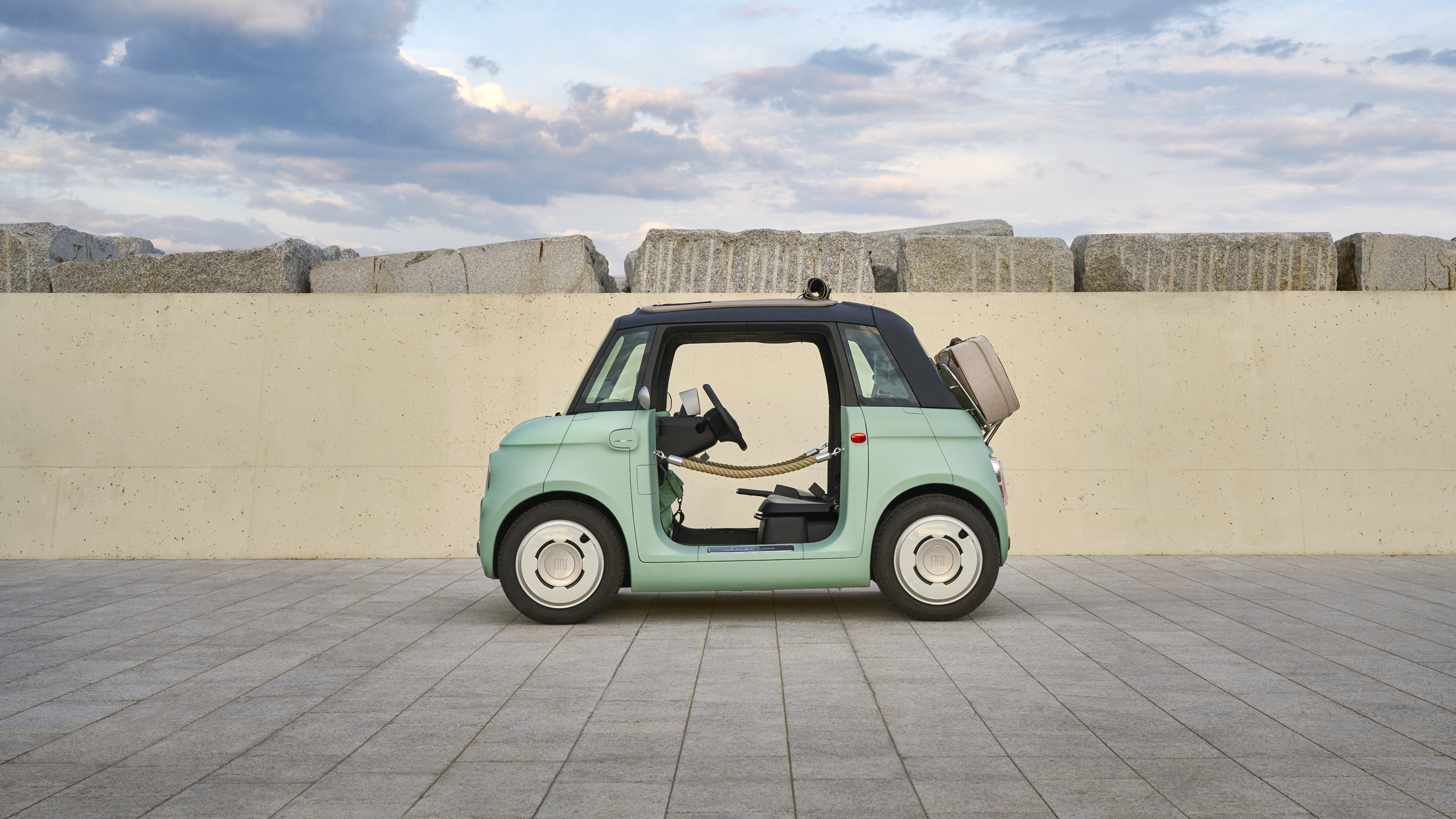 Year in review: top 10 transport design stories of 2023, selected by Wallpaper’s Jonathan Bell
Year in review: top 10 transport design stories of 2023, selected by Wallpaper’s Jonathan BellJonathan Bell’s top 10 transport design stories of 2023 span from electric campers and microcars to flying yachts and classic car recreations
By Jonathan Bell
-
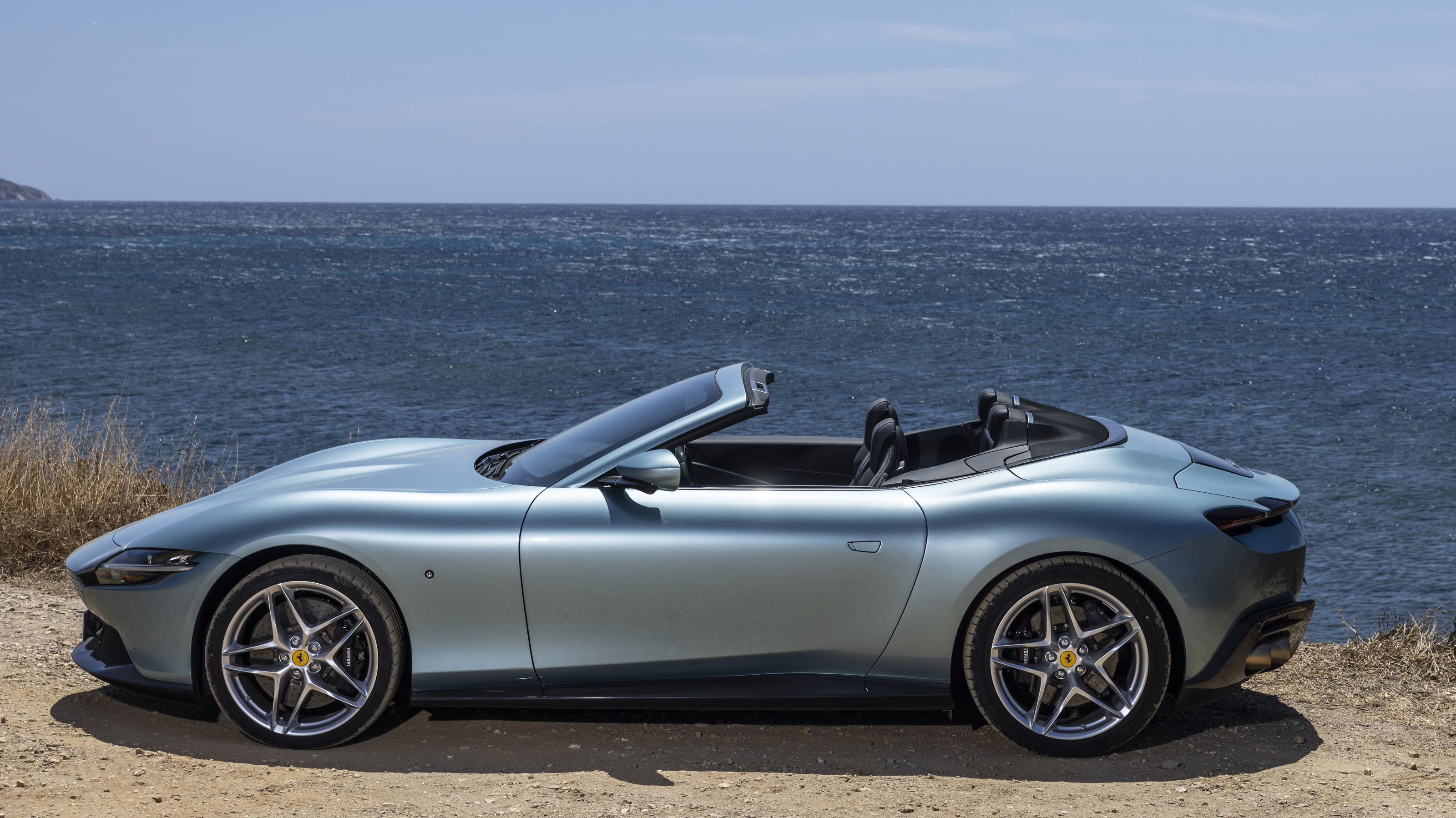 Year in review: the top 10 cars of 2023, as selected by Wallpaper’s Jonathan Bell
Year in review: the top 10 cars of 2023, as selected by Wallpaper’s Jonathan BellWhat were the best four-wheeled offerings of 2023? Transport editor Jonathan Bell takes us through the year’s most intriguing automobiles
By Jonathan Bell
-
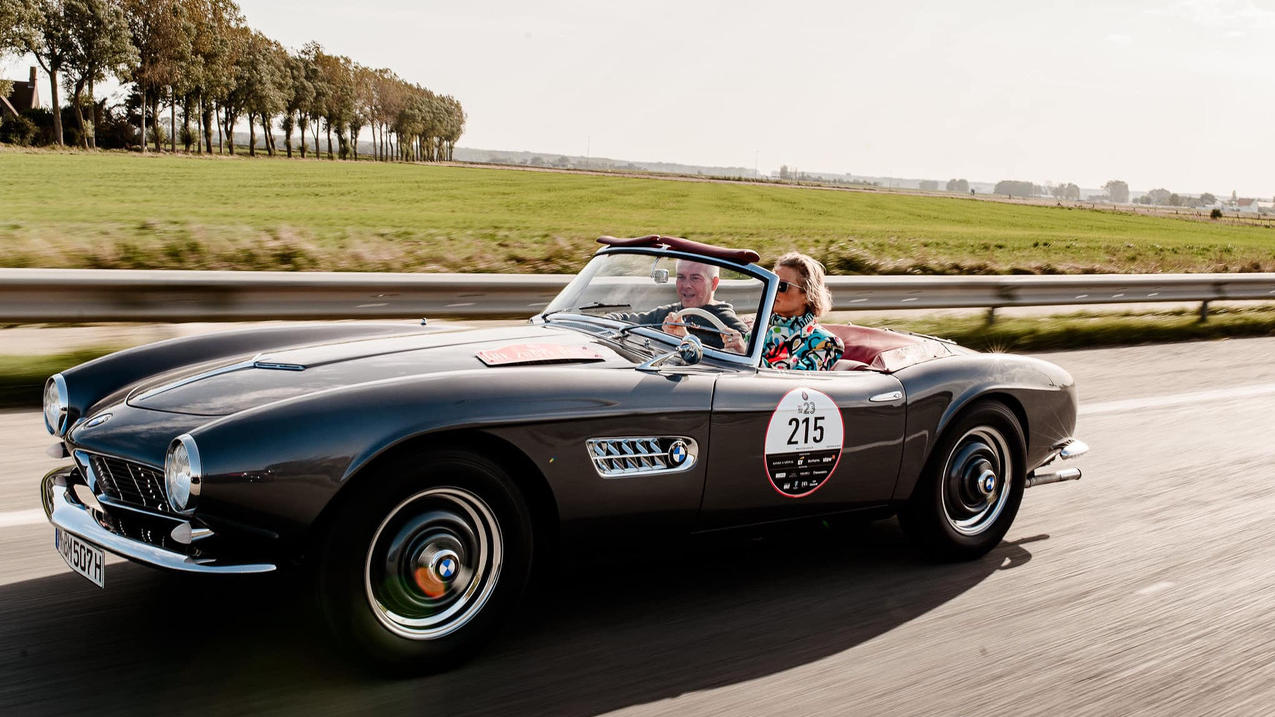 Zoute Grand Prix is a car fest like no other at a pristine Belgian beachside town
Zoute Grand Prix is a car fest like no other at a pristine Belgian beachside townAmy Serafin takes to the well-heeled streets of Knokke-Heist to experience the Zoute Grand Prix, its annual cavalcade of classic car-related events, from a rally to an auction
By Amy Serafin